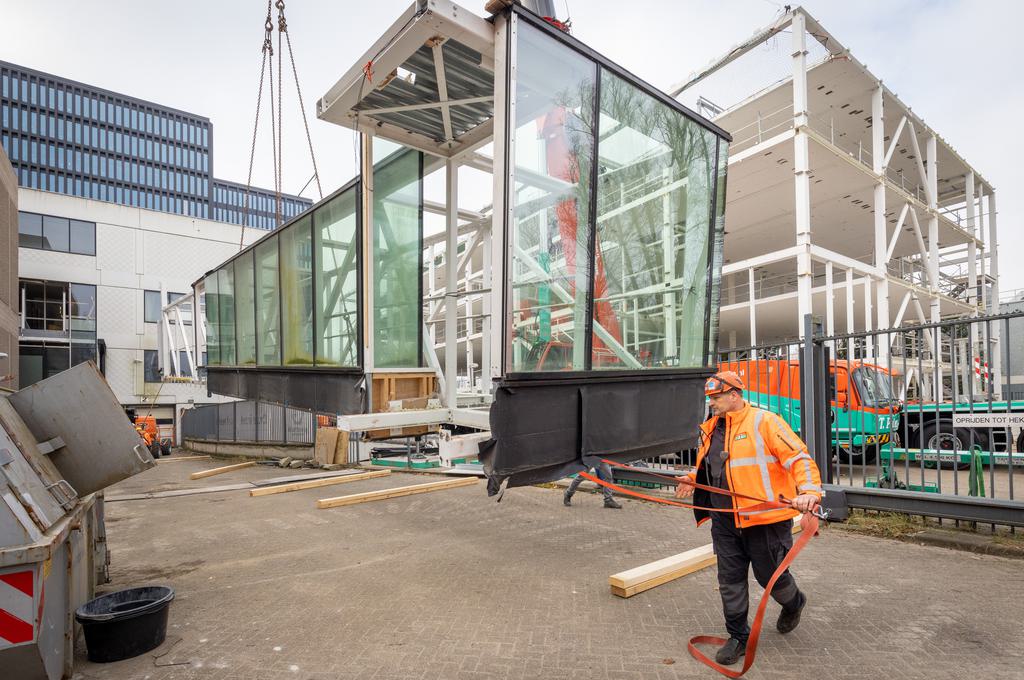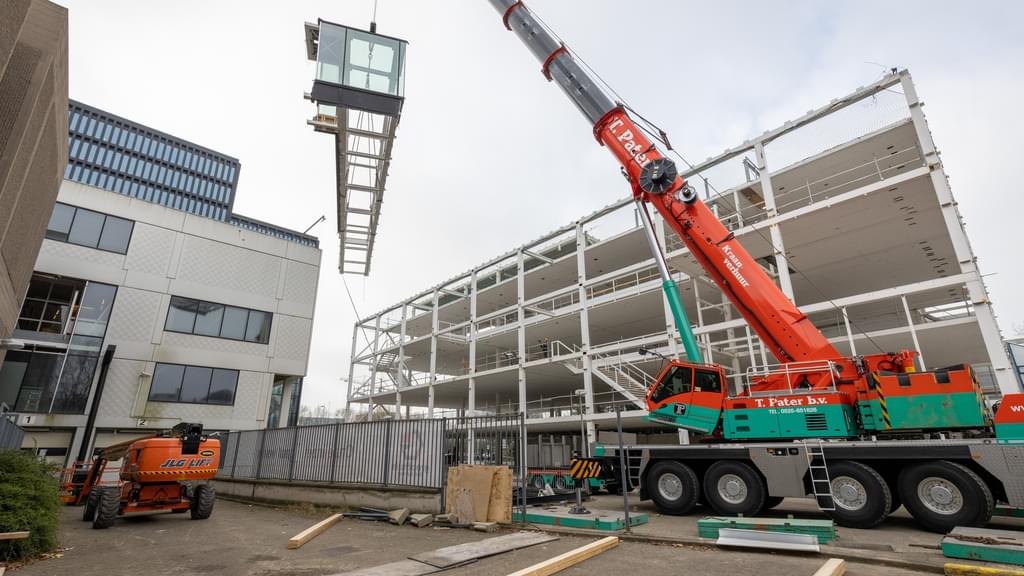There they go, the beams, columns and hollow core slabs, in the truck on their way to Twente. In 2015 the Temporary Court Amsterdam was built out of these prefabricated parts. After functioning for six years, the building was dismantled exactly as planned. A timelapse of the RVO provides some insight into what cepezed and Lagemaat actually mean by remountable architecture, which, according to them, is the future.
wow
“Wow, things can go so quickly. Built six years ago and now demolished in a few months time”, Irma Thijssen, senior advisor Sustainable Building of the Rijksdienst voor Ondernemend Nederland (RVO), summarizes the first life of the Temporary Court Amsterdam in the film. In short, she continues: “Is it a waste of all that material? No, because the building is still there. It's piled up in a warehouse and will soon get a new life in Enschede.”
first decoupling-moment
If it were up to Menno Rubbens, director of cepezedprojects, in the future, unscrewing the first nut should be just asfestive a moment as driving the first pile. Arend van de Beek, Programme Manager Circularity at Dismantling Company Lagemaat: 'You can take the carpet with you, one by one, the same goes for the toilet seats and siphons; they simply go to Enschede.
Thijssen: “This is the first real example in the Netherlands of circular construction, dismantling and rebuilding.” At the time, the Dutch Government Property Agency pioneered the requirements for circular construction and commissioned the design and construction through a Design, Build, Maintain & Remove contract. The materials remained the property of the developer, who could then exploit them again. An important award criterion was the prevention of waste and maximising the residual value of the building.
directing the rebuild
The project was awarded to the DPCP consortium (Du Prie bouw & ontwikkeling and cepezedprojects). Together with engineering firm IMd, they developed a fastening system for the hollow core slabs that makes disassembly and reuse easier. DCPC placed the dismantling and reassembly in the hands of Lagemaat, who thus also became the owner of all materials.
The switch from demolition to the collection of parts and the direction of dismantling seamlessly fits the DNA of cepezed, which has been curious about new ways of designing and cooperating, new business models and alternatives for the conventional construction chain since its establishment in 1973.
Road movie Temporary Court Amsterdam

